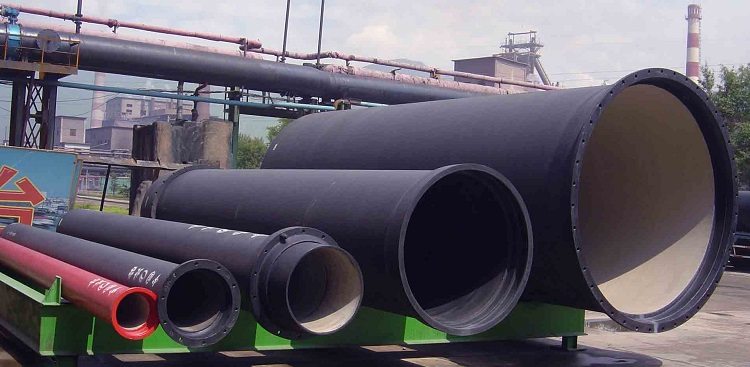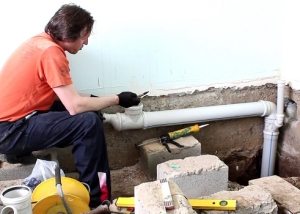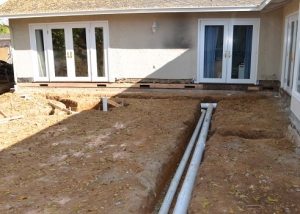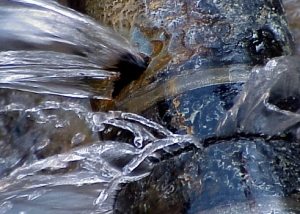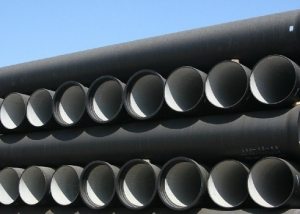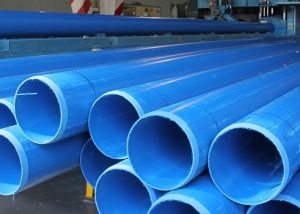Despite the appearance on the market of pipes made of polymer materials, sewer cast-iron pipes are still used. Cast iron has all the properties necessary to ensure the normal operation of the sewage system. In most apartment buildings, old cast iron pipelines still function, which proves the durability of such structures.
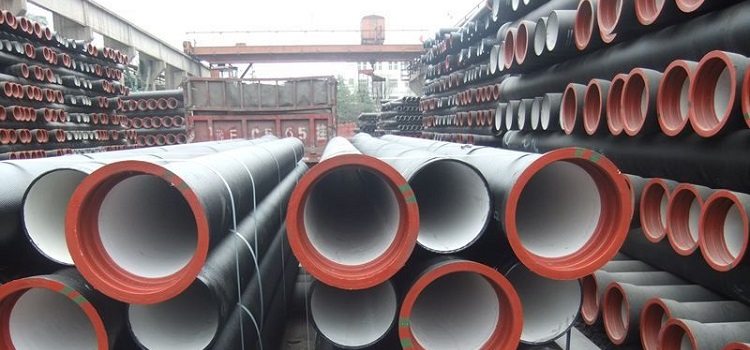
Cast iron pipes have their advantages and positive qualities, therefore, they are used in modern sewer systems
Content
Varieties of cast iron pipes for sewage
According to technological standards, sewer pipes are made of gray cast iron. In its pure form, this metal is quite brittle and brittle, prone to microcracks. Thanks to various additives, the performance of cast iron is significantly improved. Cast-iron sewer pipes are classified by the presence of impurities in the metal structure and by the type of sewer network (pressure and pressureless). Pipes are marked accordingly.
VChShG. This abbreviation means that the sewer pipe is made of ductile iron with the addition of spherical granite granules. This type of cast iron can be compared in strength to carbon steel, it is quite frost-resistant. The service life of ductile iron tubes is very high, since a metal of similar density practically does not corrode. VChShG sewer pipes are more often used in production systems. The needs of home sewers are quite capable of meeting ordinary gray cast-iron pipes.
Pipes of VShChG are made only with the presence of sockets. To improve the quality of their joints, sealing rubber cuffs are used.
PRC. Cast iron pressure pipes are suitable for systems designed for transporting liquids under pressure. They are used in the same areas as ductile iron tubes, have a fairly long shelf life.
Helpful advice! The difference between pig-iron sewer bell pipes and ductile iron is an increased degree of fragility. It is because of the low plasticity of these products that it is not recommended to carry out their installation with your own hands.
Cheka. The marking of the Cheka means non-pressure cast-iron pipes for sewage. In their production, gray cast iron with the addition of plate graphite is used. This type of cast iron pipe is characterized by relatively low strength. Therefore, CHK pipes are best used when laying gravity sewer networks with a small load. When installing the internal system of the CHK pipe, you can mount with plastic pipes by means of rubber adapters. The advantage of CHK pipes is the possibility of recycling after dismantling.
SML A kind of socketless cast-iron pipes made by casting from cast iron and rosette graphite. Such pipes have a coating of epoxy substances, which additionally protects against leaks and corrosion. SML cast-iron-free sewage from SML pipes is very durable with proper installation. The socketless joints obtained with the help of clamps give tight joints that do not need additional strengthening.
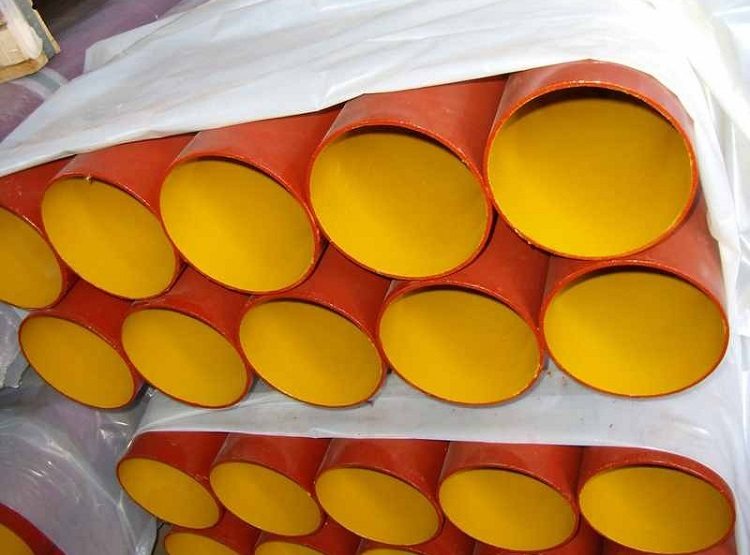
Socketless cast iron pipes have more positive qualities than ordinary ones, one of them is ease of connection
SML pipes can withstand both high and negative temperatures. They can be used both in internal and external sewage systems. The only condition is that the pipeline must be pressure free.
Advantages, disadvantages and life of cast-iron sewer pipes
Cast iron pipes can be used in almost any sewage system, they can be laid in most types of soil. Among the advantages of cast iron pipes, the following points can be distinguished:
- high strength;
- resistance to temperature fluctuations;
- long service life;
- resistance to fires;
- environmental friendliness, lack of emission of harmful substances;
- soundproof properties;
- inertness to aggressive environments;
- low susceptibility to corrosion.
Despite the presence of many positive characteristics, cast iron pipes have several disadvantages. The following factors can complicate the installation of sewage systems:
- heavy weight;
- fragility;
- the impossibility of installation without the use of special equipment and materials;
- high cost of pipes;
- significant costs for repair work.
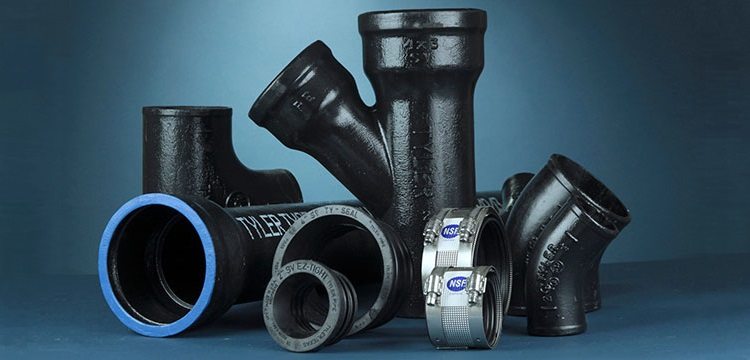
For installation of sewage from cast-iron pipes, fittings of various sizes and shapes from the same material are used
The insufficient service life of the cast-iron sewer pipe may be a consequence of the fabrication of the product. Defective can be not only pipes, but also shaped elements for connections: adapters, tees, fittings, crosspieces and others.
Helpful advice! Since cast iron pipes for sewage are produced by casting, the presence of defects in its structure can be determined by the characteristic sound. When checking pipes by tapping, you need to ensure that the sound tone remains smooth and echoing. If tonality changes are observed in some parts of the product, then this pipe is damaged.
The best performance is possessed by cast iron pipes coated with oil bitumen. The service life of the cast-iron sewer pipe SML with an epoxy coating is increased by increasing the corrosion resistance. It is also important that oil bitumen makes the pipe smoother, reducing its resistance and preventing the appearance of plaque on the walls. The surface of ordinary cast iron pipes remains rough after casting.
Checking cast iron pipes before installation
The preparation of cast-iron products is the most important stage in the repair or installation work. First of all, the transportation of such pipes should be very accurate precisely because of the fragility of the material.
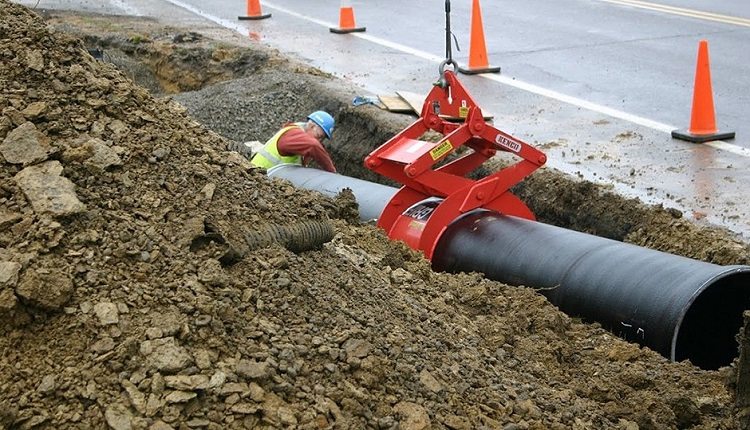
Transporting and laying pipes is a very responsible process, as if carelessly handled, it is very easy to damage a cast iron pipe.
Even if initially the design did not have factory flaws, but was damaged during transportation, in the future the pipeline may burst under the influence of water at the defect site. Even a fall from an insignificant height can harm a cast iron pipe.
In order to avoid system repair immediately after start-up, the following measures should be taken before installation:
- check the edges of pipes and sockets for bumps;
- inspect the product along the entire length - the specified diameter must be maintained throughout the length of the pipe;
- evaluate the quality of the bitumen coating: it should not be sticky or become so when heated;
- make sure that there is tow and cement at the workplace to seal the bells (if a bell sewer is installed).
After assembling each section of the pipeline, it is advisable to tap. This will make it possible to evaluate the accuracy of assembly and the reliability of the fasteners. As a result, a properly assembled system should sound completely.If you cannot hear any sections when tapping, it means that a mistake was made in these places.
Connection of cast-iron sewer pipes: basic requirements
Every method pipe connections has its own subtleties and rules.
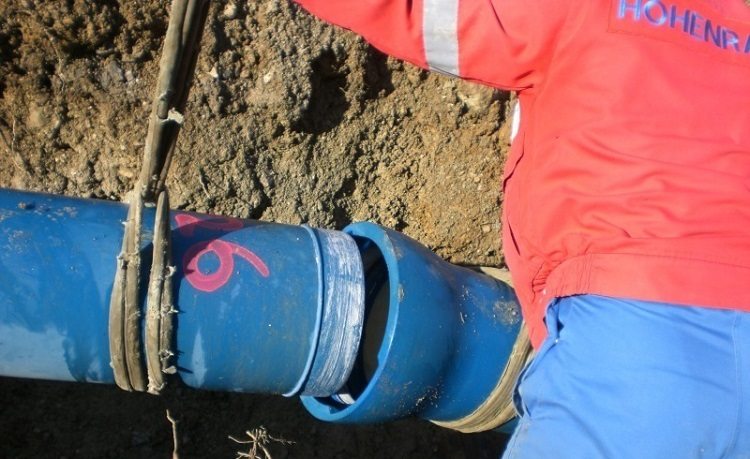
A bell-shaped connection is more labor-intensive than a bell-less connection, but if everything is done correctly, complete tightness can be achieved
Bell-shaped sewerage. The most common method of joining pipes made of cast iron is the connection in the socket. When assembling, a flat part of the pipe is inserted into the expanded part of another segment. The connection technology is the same for cast-iron pipes of any diameter, the main task is precisely the high-quality sealing of the sockets. The gap that appears between the pipe sections is clogged with tarred tow. Tamp the tow until it is 2/3 of the size of the bell. This should be done slowly with a wooden spatula and a hammer. 1/3 of the remaining depth is filled with a sealant.
Helpful advice! As a sealant, the most commonly used is a heel - organic fiber. Impregnating it with something is not worth it, since oil mixtures can impair adhesion to cement, which will greatly reduce the life of the compound.
The last stage of work will be the alignment of the pipe in the socket with the help of wooden wedges and filling the depth with cement grade 300-400. Instead of cement, bitumen mastic, clay or asbestos-cement mixture is sometimes used. In this case, the joint is smeared as it dries with oil paint. For better hardening, rammed cement is covered with a wet rag.
Socketless sewerage. Installation of sewage from socketless SML elements requires much less time. Only clamps are needed to connect. They are ordinary (connecting), used for sewers with a pressure of 0.5 bar and reinforcing. The latter type of clamp is used if the system pressure reaches 10 bar. The service life of the cast-iron sewer pipe installed in this way is long enough due to the ease of system repair. Damaged piping can be quickly dismantled and replaced. To do this, just loosen the clamps on both sides of the segment.
Cast iron pipes are reliable and durable products used for sewage systems in the home and industry. Choosing the type of pipes, one should take into account the purpose of the future pipeline and pay special attention to the process of connecting cast iron elements.
